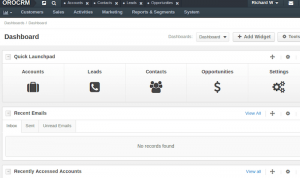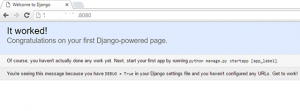LimeSurvey (formerly PHPSurveyor) is an open source online survey application. It has been widely used by many big industries to create the survey tasks. It has many powerful features like creating dynamic fields for survey. Supports multilingual, defines userroles, user groups and the more it has been integrated into various CMS. The limesurvey team provides the commercial for those who are seeking. As well as community support for its users.
This article assumes you have at least basic knowledge of Linux, know how to use the shell, and most importantly, you host your site on your own VPS. The installation is quite simple and assumes you are running in the root account, if not you may need to add ‘sudo’ to the commands to get root privileges. I will show you through the step by step installation LimeSurvey on an Ubuntu 18.04 (Bionic Beaver) server.
Install LimeSurvey on Ubuntu 18.04 LTS
Step 1. First, make sure that all your system packages are up-to-date
sudo apt update sudo apt upgrade
Step 2. Install LAMP (Linux, Apache, MariaDB and PHP) server.
A Ubuntu 18.04 LAMP server is required. If you do not have LAMP installed, you can follow our guide here. Also install all required PHP modules:
apt-get install php7.1-cli php7.1-mbstring php7.1-gd php7.1-opcache php7.1-mysql php7.1-json php7.1-mcrypt php7.1-xml php7.1-curl
Step 3. Download the latest LimeSurvey version
Download the latest stable version of LimeSurvey, At the moment of writing this article it is version 3.15.6:
wget https://www.limesurvey.org/stable-release?download=2519:limesurvey3156%20190108zip unzip "stable-release?download=2519:limesurvey3156 20190108zip" mv limesurvey/ /var/www/html/limesurvey/
We will need to change some folders permissions:
chown www-data:www-data -R /var/www/html/limesurvey chmod -R 755 /var/www/html/limesurvey/
Step 4. Configuring MariaDB.
By default, MariaDB is not hardened. You can secure MariaDB using the mysql_secure_installation script. You should read and below each steps carefully which will set root password, remove anonymous users, disallow remote root login, and remove the test database and access to secure MariaDB.
mysql_secure_installation
Configure it like this:
- Set root password? [Y/n] y - Remove anonymous users? [Y/n] y - Disallow root login remotely? [Y/n] y - Remove test database and access to it? [Y/n] y - Reload privilege tables now? [Y/n] y
Next we will need to log in to the MariaDB console and create a database for the LimeSurvey. Run the following command:
mysql -u root -p
This will prompt you for a password, so enter your MariaDB root password and hit Enter. Once you are logged in to your database server you need to create a database for LimeSurvey installation:
CREATE DATABASE limesurvey; GRANT ALL PRIVILEGES ON limesurvey.* TO 'limeuser'@'localhost' IDENTIFIED BY 'your-password'; FLUSH PRIVILEGES; \q
Step 5. Configuring Apache web server for LimeSurvey.
Create a new virtual host directive in Apache. For example, create a new Apache configuration file named ‘limesurvey.conf’ on your virtual server:
touch /etc/apache2/sites-available/limesurvey.conf ln -s /etc/apache2/sites-available/limesurvey.conf /etc/apache2/sites-enabled/limesurvey.conf nano /etc/apache2/sites-available/limesurvey.conf
Add the following lines:
<VirtualHost *:80> ServerAdmin [email protected] DocumentRoot /var/www/html/limesurvey/ ServerName your-domain.com ServerAlias www.your-domain.com <Directory /var/www/html/limesurvey/> Options FollowSymLinks AllowOverride All </Directory> ErrorLog /var/log/apache2/your-domain.com-error_log CustomLog /var/log/apache2/your-domain.com-access_log common </VirtualHost>
Now, we can restart Apache web server so that the changes take place:
sudo a2ensite limesurvey.conf sudo a2enmod rewrite sudo systemctl restart apache2.service
LimeSurvey will be available on HTTP port 80 by default. Open your favorite browser and navigate to http://yourdomain.com/admin or http://server-ip/admin and complete the required the steps to finish the installation. If you are using a firewall, please open port 80 to enable access to the control panel.
Congratulation’s! You have successfully installed LimeSurvey. Thanks for using this tutorial for installing LimeSurvey online survey platform based PHP on Ubuntu 18.04 LTS (Bionic Beaver) system. For additional help or useful information, we recommend you to check the official LimeSurvey web site.









